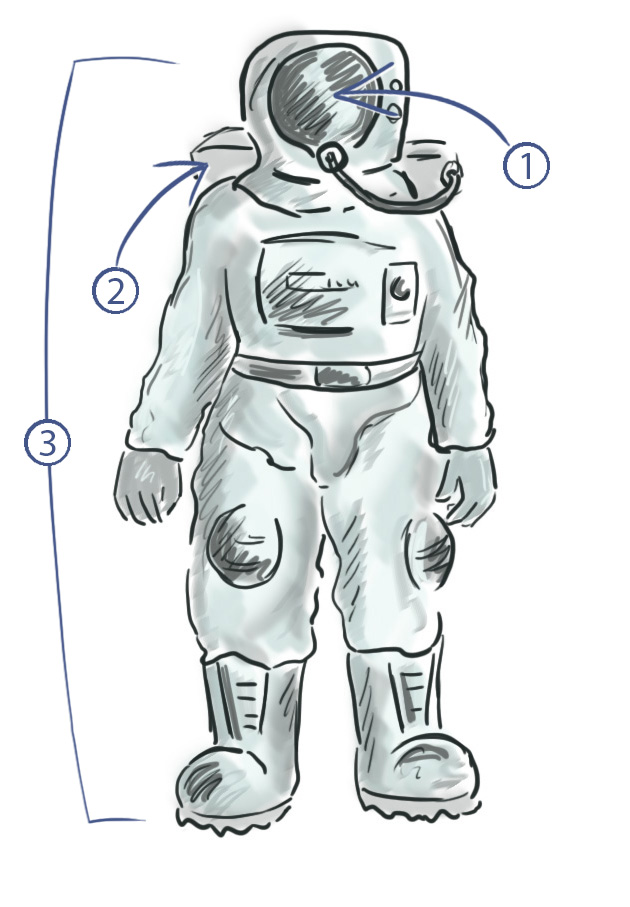Though you still have some food, fuel, and other resources in your spacecraft, they will not last long, and you will need to stay on Mars for many months. Now that you know what the surface of Mars is like, it is time for you to venture out of your spacecraft, and explore your new planet.
What are the problems you will face on Mars?
Complete the following table to remind yourself what Mars is like, what problems you will face, and what you will need to do. Then, click on the rocket button to view an example completed table, and compare your answers!
| Activity | Why is this a problem on Mars? | What could you do to solve the problem? |
|---|---|---|
| Breathing | ||
| Walking | ||
| Finding water | ||
| Finding shelter | ||
| Finding food |
| Activity | Why is this a problem on Mars? | What could you do to solve the problem? |
|---|---|---|
| Breathing | No oxygen. | Wear a spacesuit with an oxygen tank. |
| Walking | Inhospitable terrain makes for difficulty walking. | Ensure spacesuit is strong, durable. |
| Finding water | Water is not present in liquid form. | Locate ice: this could be melted and purified. |
| Finding shelter | There are no trees or forests. | You would need to take or build a shelter. |
| Finding food | There are no plants or animals on Mars. | You would need to take food and/or or grow vegetables. |
The conditions on Mars will definitely cause problems for human beings, but there may be organisms which can survive on Mars without special protection, and they may be living there now! But they will almost certainly not look anything like the ‘little green men’ mentioned in many science fiction stories!
Creating a Martian
If there really are living organisms on Mars, what features are they likely to have? Create an ‘ideal Martian’ in the exercise below by dragging possible characteristics onto the image.

Imagery by Hollyanne Schnieden
You have made some decisions about the possible features of Martians.
In the following table, explain why you chose those features. Then, click on the rocket button to view an example completed table, and compare your answers!
| Feature | How does this work in your Martian? | Why did you decide this? |
|---|---|---|
| What it eats | ||
| The gas it might breathe in | ||
| Size |
| Feature | How does this work in your Martian? | Why did you decide this? |
|---|---|---|
| What it eats | Can make its own food | Almost no food available to eat |
| The gas it might breathe in | Carbon dioxide | Almost no oxygen, but plenty of carbon dioxide |
| Size | Small | Difficult for a large organism to get enough to eat |
So far, no living organisms have been observed on Mars. If true Martians really exist, they might be similar to the ‘extremophiles’ that live on Earth – these are organisms which can survive in extreme, or harsh, environments. They are often very small, and are able to make use of (or ‘metabolise’) chemical substances that we are unable to use. Your ideal Martian may also be small, and able to make use of carbon dioxide gas, possibly to make its own food (just like a plant). They would also need to be able to withstand radiation and severe cold.
Do we really need Spacesuits?
When you walk on the surface of Mars, you will need to wear a spacesuit. This will protect you, and also provide a supply of air to breathe.

Image by Hollyanne Schnieder